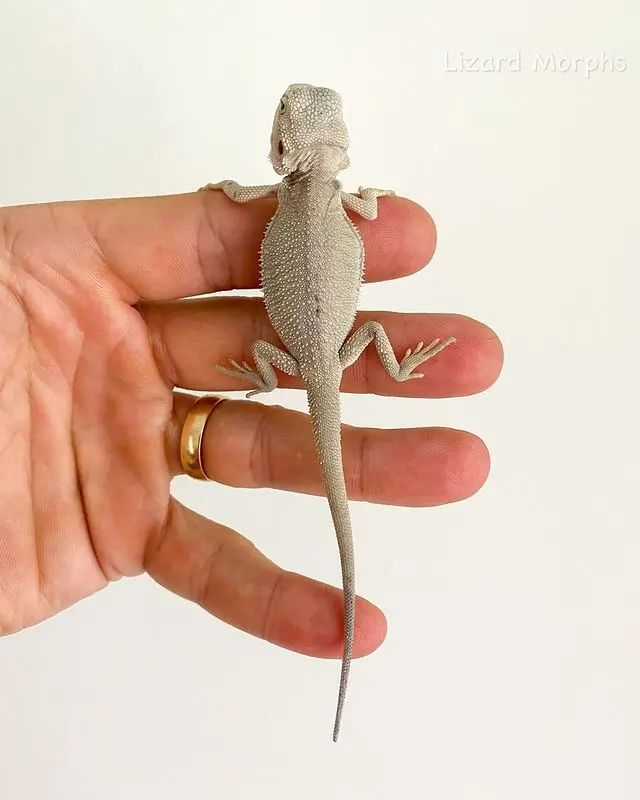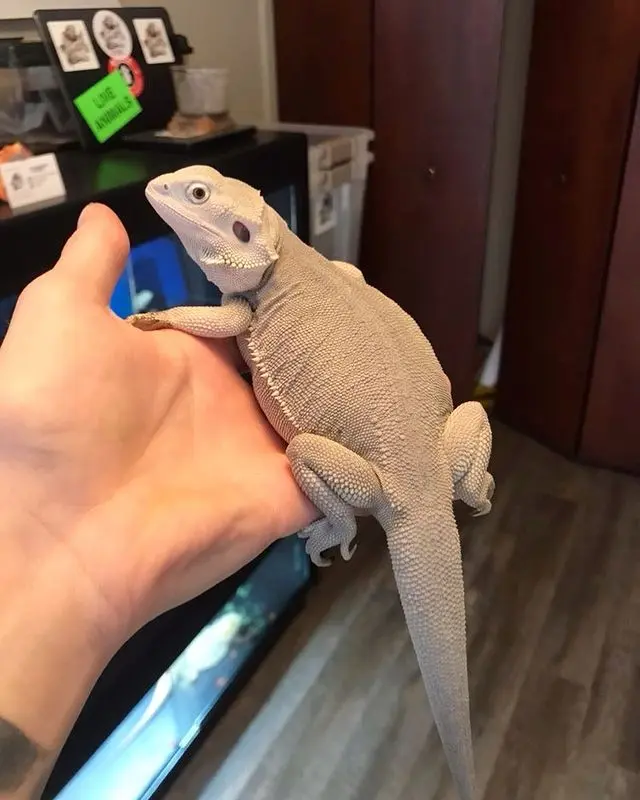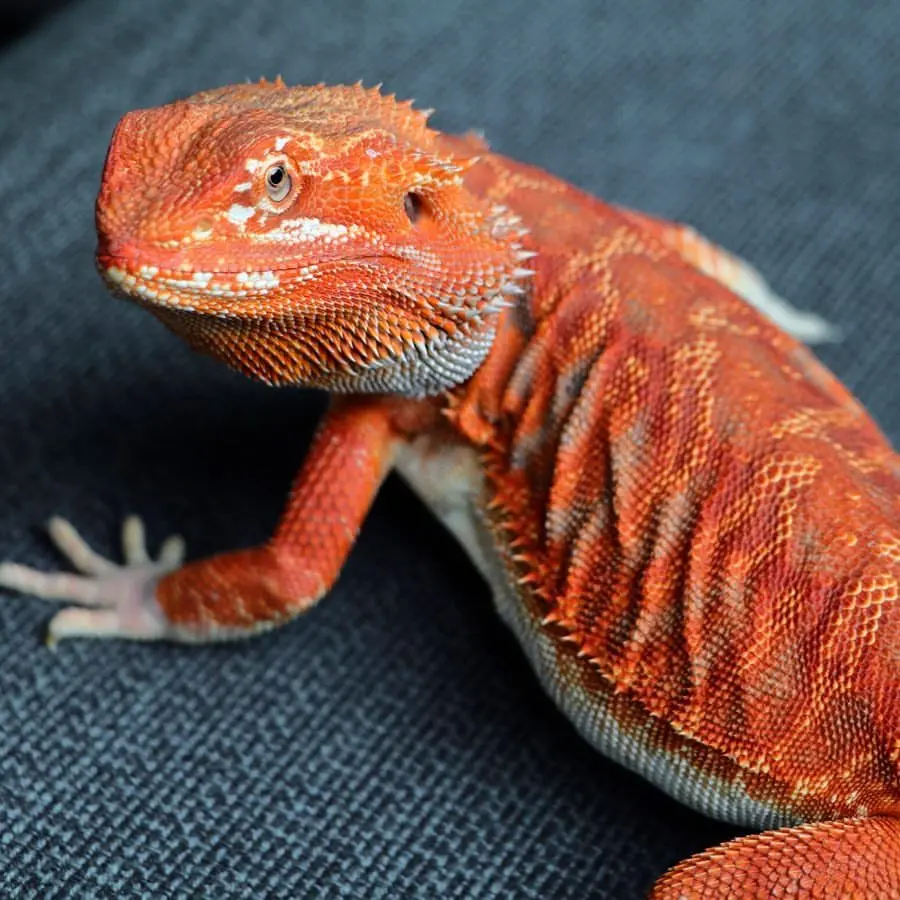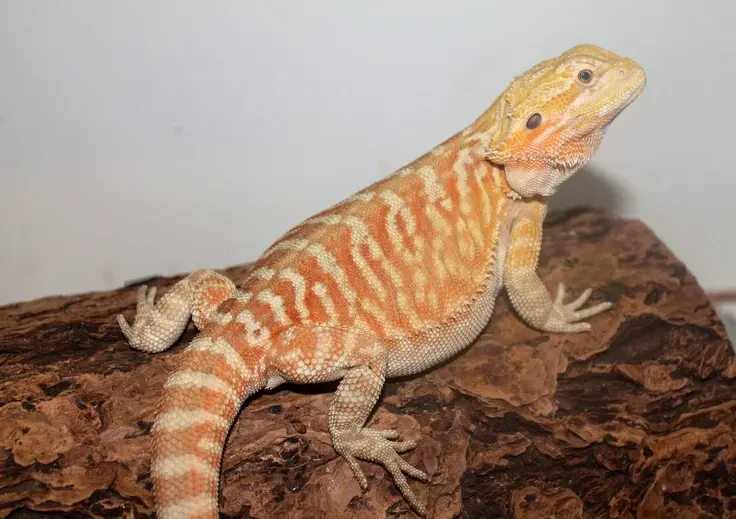Hypomelanistic “hypo” bearded dragons are morphs belonging to the bearded dragon family, which have quickly become a hit among reptile fans due to their unique characteristics and appearance.
In today’s episode, we check out the Hypomelanistic Bearded Dragons in detail including their distinguishing features and specifics of their care regimen.
 The Hypo Dragon At A Glance
The Hypo Dragon At A Glance
| Scientific Name: | Pogona vitticeps (Hypomelanistic morph) |
| Common Name(s): | Hypomelanistic Bearded Dragon, ‘Hypo’ Bearded Dragon |
| Family: | Agamidae |
| Class: | Reptilia |
| Genus: | Pogona |
| Species: | Vitticeps (hypomelanistic morph) |
| Origin: | Australia (common in captivity worldwide) |
| Lifespan: | 6-10 years |
| Size: | 18-24 inches |
| Energy Level: | Moderate |
| Temperament: | Generally calm and friendly |
What is a Hypomelanistic Bearded Dragon?

Hypomelanistic Bearded Dragons belong to the reptile family and are a genetic morph, specifically known for having less melanin or black coloring compared to their species brethren. They originate from the deserts of Australia and have been kept as pets across the globe.
Characteristics of Hypomelanistic Bearded Dragons

With their remarkable traits, Hypomelanistic Bearded Dragons stand out in the reptile pet community. They exhibit the following characteristics:
- Color & Pattern: These exotic reptiles have less dense, lighter coloration – mostly adorned with hues of creamy yellow, peach, and orange.
- Size & Weight: Like other Bearded Dragons, these creatures can grow between 18 – 22 inches. They typically weigh between 10–20 ounces.
- Behavior: Hypomelanistic Bearded Dragons are known for their calm and friendly demeanor. They tend to enjoy handling and socializing with their human caregivers.
- Lifespan: A properly cared for Hypomelanistic Bearded Dragon can live between 7–12 years.
Appearance & Physical Features

The Hypomelanistic, or ‘Hypo’ Bearded Dragon, carries a clear or translucent appearance and less melanin than the average Bearded Dragon. This results in an interesting range of skin tones covering from pink to yellow, powder blue, even pale orange, and snow.
Their reduction in dark pigmentation starts at their heads and continues throughout their entire body. Their nails are reported to be clear, which is a significant distinction from the typically black nails of regular Bearded Dragons. Much like their skin tones, Hypomelanistic Bearded Dragons’ eyes may also appear lighter than other Bearded Dragons.
One interesting note about the ‘Hypo’ morph is that any internal colors these Bearded Dragons have might be visible through their skin. This translucence can lead to exotic hues such as blue, pink, or purple, adding to their unique visual appeal.
Care Sheet/Guide for Hypomelanistic Bearded Dragons

Looking after a Hypomelanistic Bearded Dragon is a commitment that requires a detailed understanding of its needs.
The Ideal Habitat
A suitable habitat contributes significantly to the health and happiness of Hypomelanistic Bearded Dragons. Here are the key components:
- Enclosure Size: For an adult Hypo Bearded Dragon, a 120-gallon capacity enclosure is recommended. This ample space allows the dragon freedom of movement and space for essential habitat furnishings.
- Temperature Regulation: Maintaining an accurate temperature gradient within the enclosure is essential – the warm end should be between 95–105°F for basking, with the cooler end at 75–85°F. Night temperatures should not drop below 65°F. Use a high-quality thermometer to regularly check temperatures.
- Lighting: Bearded Dragons require exposure to UVB light for 10–12 hours a day, mimicking natural sunlight. This light stimulates Vitamin D3 production, which helps the dragon absorb calcium, crucial for bone health.
- Humidity & Substrate: The enclosure should have a daily humidity of around 30–40%, emulating the desert conditions of their native Australia. Non-particle substrate is recommended to avoid any risk of impaction (a form of constipation), so consider reptile carpets or tiles.
Dietary Needs
A well-balanced diet is crucial for the Hypomelanistic Bearded Dragon’s health and development. Here’s what that should entail:
- Live Food: Bearded Dragons are omnivores, with a diet comprising mainly insects such as crickets, dubia roaches, mealworms, etc. These live feeds should be supplemented with calcium and Vitamin D3 to meet nutritional requirements.
- Plant Diet: Greens should also be included in the diet – items like turnip greens, bell peppers, and peeled cucumber. Fruits should comprise only 10–20% of the diet due to high sugar content.
- Feeding Routine: Regular feeding routines ought to be established. Juvenile dragons require daily feeding while adults can be fed every other day.
Handling and Interacting
- Handling: When picking up your dragon, make sure to support their whole body, including feet and tail. Always approach from the side rather than from above to avoid triggering a defensive response.
- Socialization: These dragons enjoy social interaction. Regular, gentle handling helps to familiarize them with their caregivers and builds trust.
Health and Wellbeing
Taking care of a Hypomelanistic Bearded Dragon’s health involves several factors:
- Hydration: Bearded Dragons do not usually drink water from a bowl. They prefer to lick droplets from their surrounding or their skin after misting. So, providing regular lukewarm baths can aid hydration and cleanliness.
- Veterinary Care: Regular veterinary check-ups can spot health problems early. It’s also essential to have a local vet who specializes in reptiles for any emergencies.
Caring for a Hypomelanistic Bearded Dragon can be a truly rewarding experience. These unique creatures provide joy and companionship to their caregivers and thrive with proper care, leading to a long and healthy life.
Health Issues in Hypomelanistic Bearded Dragons

Hypomelanistic Bearded Dragons, like all reptiles, are subject to a variety of health issues. Any pet owner must stay informed about potential problems and seek veterinary advice when necessary.
Metabolic Bone Disease (MBD)
Lack of proper calcium intake can lead to MBD. This disease alters the dragon’s bone structure, leading to fractures, kinks, and disfigurations. Regular exposure to UVB lighting is also essential as it helps the dragon in calcium absorption.
Impaction
Substrate ingestion or a diet with excessively large or hard food can lead to impaction – a form of constipation. If left untreated, this can escalate to a serious condition, leading to lethargy and loss of appetite.
Respiratory Infections
Deviations from the optimal tank temperature and humidity can lead to respiratory problems. Symptoms include wheezing, discharge from the facial orifices, and irregular mouth movement.
Mouth Rot (Stomatitis)
Improper hygiene can result in mouth rot – an infection marked by a reddish or whitish outline around the mouth. Catching this early is crucial to prevent any escalation to a severe situation.
Knowing these potential health risks, make sure to follow the care guide closely. Any signs of discomfort or unusual behavior in your pet should be addressed immediately with a trusted veterinarian.
Fun Facts about Hypo-Bearded Dragons
Here are some entertaining and intriguing facts about hypo dragons:
- “Bearded” Dragon: Their signature “beard” displays various moods, from anger to fear. Total mood rings!
- Tail Tales: Unlike some other lizards, Bearded Dragons don’t shed their tails as a defensive mechanism. Take care of those tails!
- Waving Dragons: Bearded Dragons have been found to wave their arms as a form of communication. It’s usually a sign of submission to a more dominant dragon.
- Running on Two Legs: Given enough speed, Bearded Dragons will start running on their hind legs!
- Sun-Worshippers: Bearded Dragons absorb the sun’s heat through their stomachs, which is why you often see them lounging on rocks in a belly-down position.
Owning a Hypomelanistic Bearded Dragon is a wonderful and rewarding experience. Just like with any pet, knowing their potential health issues and understanding the peculiarities and fun aspects of their behavior can help you provide them with the care they need and revel in their unique personalities.
Conclusion
To sum it up, Hypomelanistic Bearded Dragons are fascinating creatures that make rewarding pets for those willing and able to meet their needs. Proper care and nurture can allow these beautiful reptiles to thrive in captivity and serve as a delightful addition to your family.
